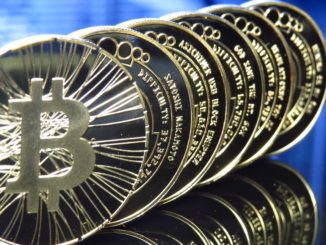
Michel wal (travail personnel (own work)), CC BY-SA 3.0, via Wikimedia Commons
One of Say’s Laws holds that “we produce to consume”. This is certainly the underlying theme of the Industrial Revolution with its accompanying exponential growth in production of technology, communication, and energy utilization. While private financial capitalism grew in capacity and sophistication enough to rescue the U.S. economy from the 1907 financial crisis, by the next crisis adjacent to WW I the “leverage” had become too large, and our Federal Reserve system and income tax was invented out of whole cloth. So, government achieved a seeming complete control of our economic well-being as noted in the prior paragraph. Our feeling of economic omnipotence fueling the Roaring Twenties was dashed by the onset of the Depression. Despite the clear failures abetted by the Federal Reserve system our government and others used the principle of “if a little is good more must be better”. John Maynard Keynes turned Say on his head, effectively pronouncing that “we consume to produce”. Aggregate demand, or consumption, was the new key to economic recovery and health, and enhanced production would surely follow. His basic advice to government, according to Emile Woolf, was “to spend your way out of recession—and if a first you don’t succeed, spend more and spend again!”. Born was the new field of “macroeconomics”.
Keynesian macroeconomics became government’s law of the land. Its initial failures (many have written that FDR’s New Deal Keynesian spending extended the Depression) may have been hidden by the side effects of WW II and ever-more fanciful financialization of imagined assets. We became the Arsenal of Democracy, massively growing our industrial production capacity and output so that the opponents of the Nazis and the Japanese Imperialists could consume and resist. Standard primitive economics still applied; we received promises to pay under Lend-Lease then real assets in return (worldwide military bases from the U.K. and gold and other payments from the Allies, some payments continuing for several decades after the war). Say’s Law (not Keynes) ruled again in the post-war period as only the industrial productive capacity of the U.S.A. remained intact. Our products satisfied the needs of the rest of the world and directly enabled the recovery of their productive capacity, whereupon they became intrinsically wealthier trading partners to us and each other. Economies of scale, technology, and energy availability cheapened production, transportation, communication, and exchanges of payments and credits. These processes empowered corporate globalism. Those corporations became transnational, and empowered supportive governmental notions of political globalism, based not in democratic desires but rather corporate compensation. The new niche product/service of financial assets and services exploded. Both governments and private interests took full self-sustaining advantage of this new niche.
For purposes of exchange, the representations of the credit/debt transactions and the non-intrinsic values of consumption and services led to ever more indirect and indistinct financial services and products. Government continued to buy the loyalty of its constituencies with new and broadening privileges and entitlements, hiding the resultant increase in fiat money supply and suppressing the market visibility of loss of purchasing power as currencies were debased. Emile Woolf has written in Economic Perspectives, “The inescapable effect of government regulation is the transfer of resources from workers in productive industry to the un-needy, non-contributing, receivers”. As Western nations concentrated wealth thereby, these more economically effective areas off-loaded production to lesser developed countries with cheaper labor and resources. This effort over several decades artificially held down any reactive rise in prices, i.e., reduction in purchasing power, in response to the purposeful continuation of inflation (debasement of the currency) by, for example, our Federal Reserve and Treasury. Those two had already divided responsibilities in 1951, money supply controlled by the Fed and debt by the Treasury, in close coordination. Although money and eventually currency had previously been tied to items of real intrinsic value as dictated by the market or later to value dictated by a broad social power center (government), a final break with this needful reality occurred in 1971 when our government abolished the last of the Bretton-Woods international system of exchange.
© Nik Bednarski, M.D. 2023



